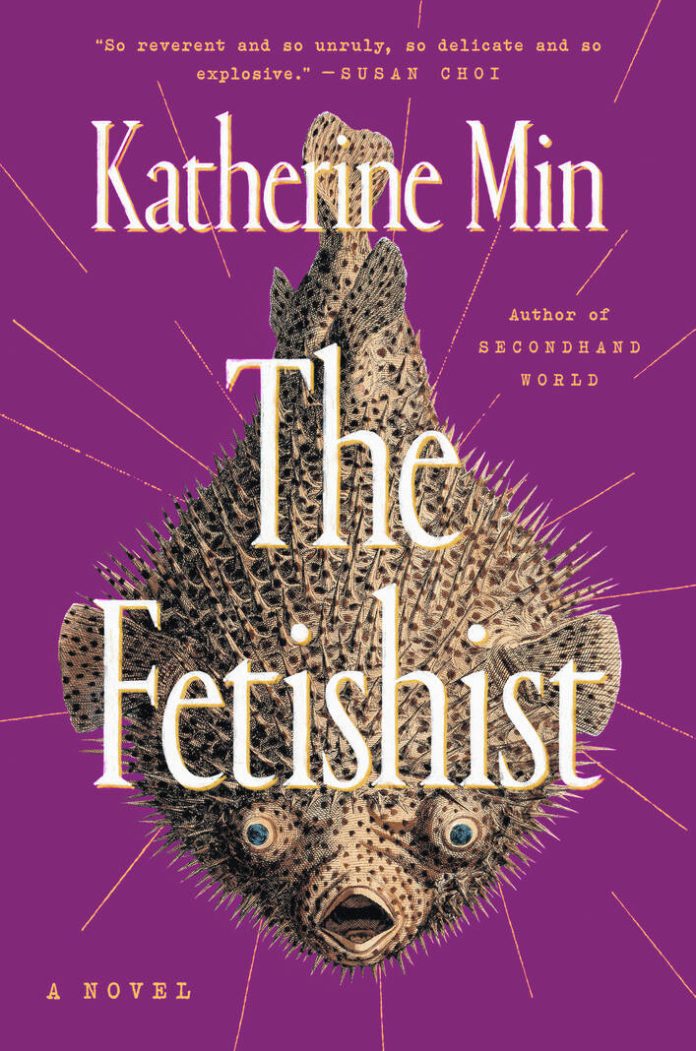“The Fetishist,” the delightful, fantastic, fabulous and unfortunately posthumous second novel by Katherine Min, might be the first literary work by an Asian American woman to “deal squarely with queasy questions of desire and politics between a white man and an Asian woman.”
Poet Cathy Park Hong writes that in her introduction to “The Fetishist.” And, as we learn in the heart-rending afterword by the author’s daughter Kayla Min Andrews, we almost didn’t get this one. Katherine completed the novel just before receiving a diagnosis of breast cancer in 2014, after which she turned to writing essays and never said another word about it. After her mother’s death in 2019, Kayla found the manuscript on her mom’s computer, ready to go, just as Katherine had described it to her when she was working on it:
“It’s going to have many characters, omniscient narration. Lots … is going to happen — suicide, kidnapping, attempted murder. It’ll be arch and clever but also heartfelt; I’m gonna channel Nabokov.”
Exactly! At the center of “The Fetishist” are a cellist named Alma Soon Ja Lee and a violinist named Daniel Karmody; the two had a passionate affair 20 years before the novel begins. It was broken off due to an infidelity that ultimately caused the aforementioned suicide, kidnapping and attempted murder. Min brings in another pair of lovers: tiny, miserable, 23-year-old Kyoko and her 6’3”, 295-pound Black boyfriend and bandmate, Kornell.
In the novel’s present, Alma has been forced into retirement by a diagnosis of MS and, early on, has a seizure that leaves her in a coma. While unconscious, she reflects on her romantic history, as revealed in a chapter titled “Alma and the March of the Rice Kings.”
A boy named Johnny Appleby in high school was the first, “impregnating her with his five-word pronouncement of immutable destiny. ‘Oriental girls are so sexy.’ Blush of pleasure at the implication. She, Alma Soon Ja Lee, flat-chested, twig-legged, scale-practicing daughter of greengrocers, was Oriental (like a rug!) and therefore she was …sexy?”
And after that, “A parade of rice kings wherever she went, lecherous, treacherous, beseeching — enfolded like origami, bent like bonsai, draped in silk, and embellished with hanzi [Chinese characters]— presenting themselves like gifts to a foreign bride.”
There’s hardly a sentence in this book — feverish and funny and razor-sharp — that does not merit quoting. It’s fearless in the face of terminal illness and death, which the author did not know were waiting just around the corner, making a passage like this absolutely spine-tingling:
“When someone dies, our impulse is to flatten her out, to press her between wax paper like a leaf, or to fix her in amber like a bug. Death as capture, death as collected works. But death is a false terminus, one moment only. It seems more significant because it is the last moment, the most recent, when really it is the smallest and least telling. Life is the plumpness of all directions, of surprises and contradictions, of impulses, mistakes, duplicities and redemptions. While the vanishing point on the horizon line is a dot, a blip, the same for us all.”
Not quite the same for Katherine Min, though, whose wonderful novel preserves her “plumpness” for all time.







